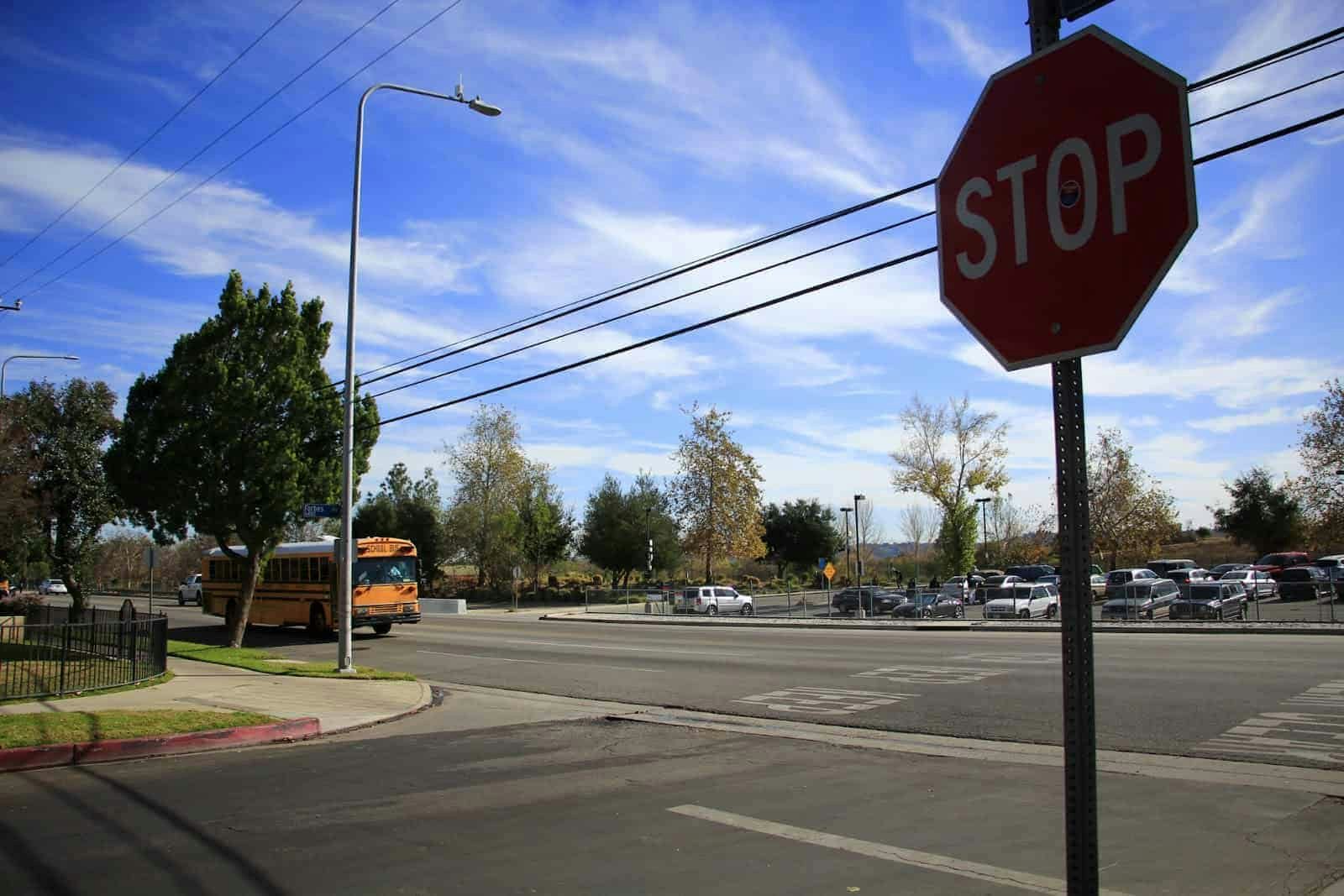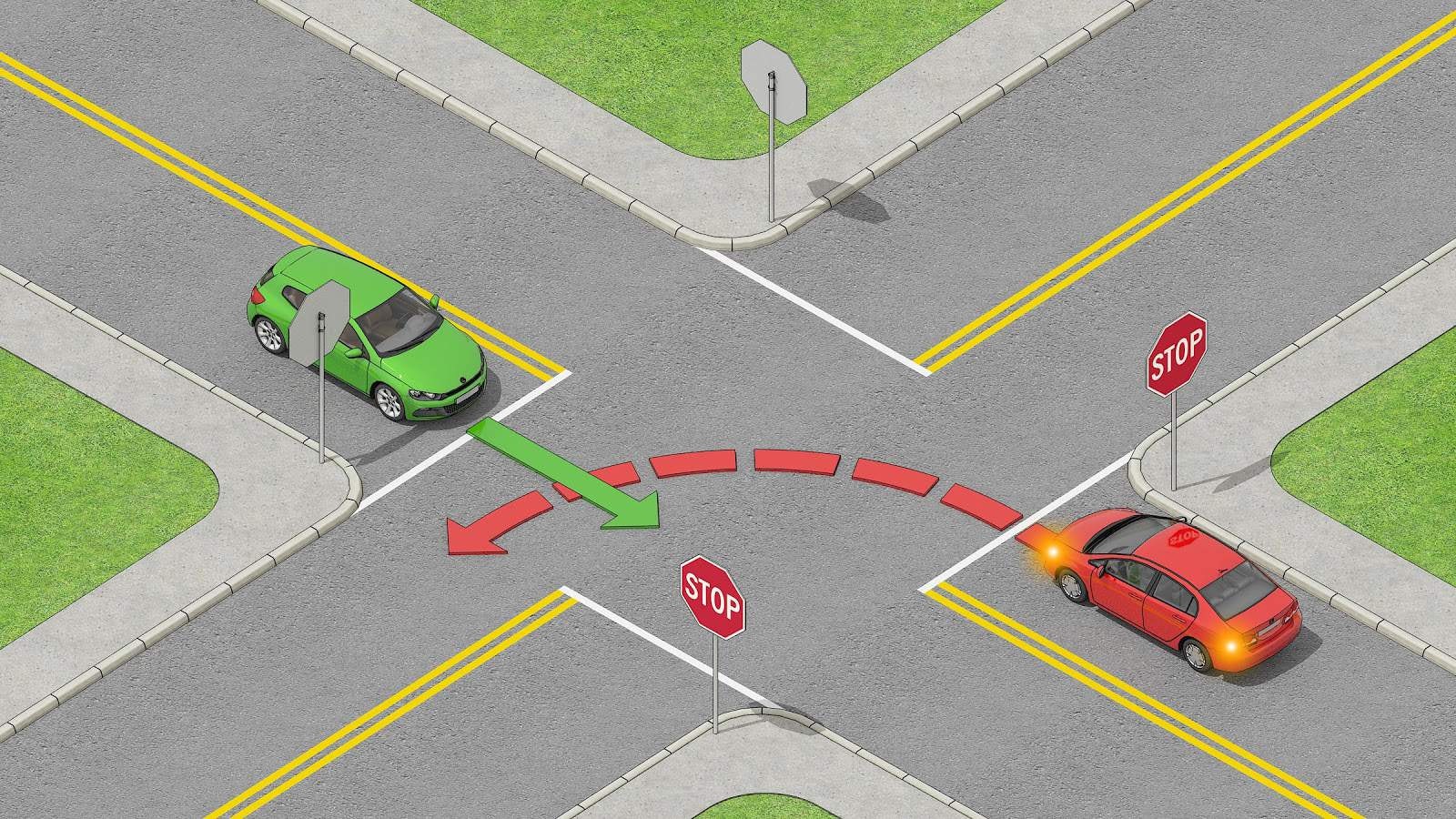
Right-of-Way Rules at Controlled Intersections – What to Do When Facing Stop and Yield Signs
What Are the Rules When Facing a STOP Sign?
When facing a STOP sign, you must come to a full stop at the stop line and yield the right-of-way to all vehicles and pedestrians in or approaching the intersection.
Follow these 6 STOP sign rules when driving to avoid pedestrian and car accidents:
- If there is no stop line, stop before the crosswalk.
- If there is no crosswalk, stop before the intersection at a point which gives you a good view of the intersecting roads. Only move forward again when safe.
- If there is a STOP sign with no pavement markings, stop near the intersection where you have a good view of approaching traffic
- If there is a crosswalk without a stop line, stop at the nearest crosswalk line.
- If there is only a stop sign, stop at the stop line
- If the crosswalk has a stop line, stop at the stop line

What Are the Rules When Facing a YIELD Sign?
When facing a YIELD sign, you must prepare to stop and yield the right-of-way to other vehicles or pedestrians in or approaching the intersection.
However, you don’t have to stop unless there are vehicles/pedestrians in or approaching the intersection. Slow down to a speed at which you can stop and yield if needed.
What’s the Difference Between Stop and Yield Lines?

A stop line is solid, and a yield line is broken. Stop/yield lines have the same meaning as STOP/YIELD signs and should be treated as such.
Where Are STOP signs and YIELD Signs Located?

Both STOP signs and YIELD signs are used to control traffic, and are located:
- at intersections where caution is needed due to poor or limited visibility
- where vehicles on the other road have priority
The Right-of-Way Rules at Different Types of Controlled Intersections
2-Way Stop
If both you and an oncoming vehicle are facing STOP/YIELD signs, you must first yield to other traffic and then apply the right-of-way rules.

4-Way Stop OR All-Way Stop

A 4-Way Stop means traffic from all four directions must come to a complete stop. As all directions are facing a complete stop, the vehicle that reaches the intersection first should proceed first.
The following right-of-way rules apply if several drivers reach the ‘4-way stop’ intersection at the same time:
Rule #1 – Drivers on the left must yield to drivers on their right.

Rule #2 – Vehicles turning left must yield to oncoming traffic

What Are T-Intersections?

T-intersections are where two roads meet and one of them ends. The general ‘right-of-way rules don’t apply to T-intersections. The vehicle traveling on the road that ends must yield to all traffic and crossing pedestrians on the through road unless otherwise signed.

When nearing a T-intersection, slow down and watch out for pedestrians and traffic even if you have the right-of-way
Always Look Both Ways at Intersections!
Always look to both sides, even if other traffic is facing a STOP sign or red traffic light, as other road users can make mistakes or disobey rules. Remember, it’s your life on the line.
At any intersection:
- Look to the left. Always look to the left first as vehicles from the left will cross your path before vehicles from the right
- Look to the right
- Look to the left once more. Ensure you didn’t miss anything and it’s safe to proceed

550+ exam-like questions
All you need to ace your test
Perfect for first-timers, renewals and senior citizens
Recommended articles
Ace your DMV test, guaranteed
Want to Be the Top School in Your Area?
- Simple & automated admin
- More time for teaching
- #1 learning materials for students


